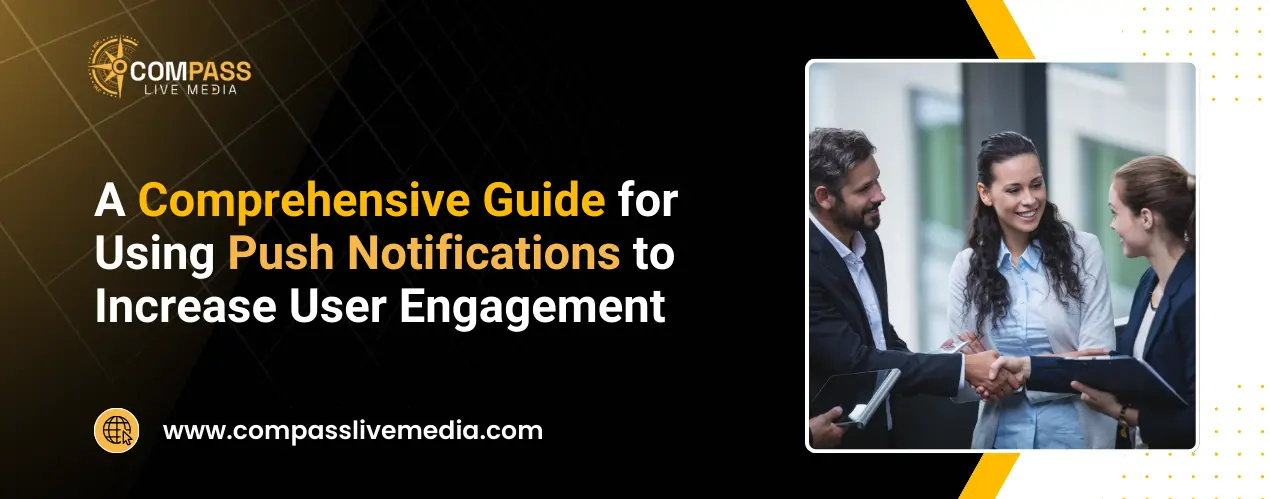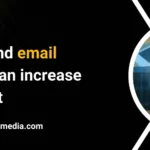Introduction
In the modern world, customer relations or interaction with app users is extremely critical for any business or app developer. The most valuable tool to sustain such a relationship is the possibility of using push notifications. Communications through the notification bar are immediate and developing messages. That reach users of an application to pass on important information, updates, or promotional information, among others. Finally, this article compares push notifications with other forms of communication. Such as email, and informs the reader about the types of push notifications and how to use them properly. Further, it also analyzes the prospect of the usage of push notifications in the constantly growing world of technology.
What are Push Notifications?
Push notifications are minimum-size, clickable messages that appear on the user’s device—portable, fixed, or both—including a smartphone, tablet, or personal computer. These notices are given by an application that the user is using or a website that the user has registered with. While web push notifications can be compared with email or SMS, that is not what they are actually intended. They are designed to give an immediate message most prominently and are particularly located on a home screen or a notification bar. They are rather multifunctional and can be used both to deliver messages to the user about new or updated app content. As well as to convey a simple marketing message to a customer. They are highly effective at providing user engagement and arranging for users to come back to the application or website.
Types of Push Notifications
Push notifications can be categorized into several types, each serving different purposes:
1. Transactional Notifications: These are initiated by actions such as user clicks or an event within the application. This could be an order receipt or confirmation, shipping notifications, or a password change alert. The acquired information seems to be significant and current about the most recent activity of the user.
2. Promotional Notifications: They are used to send messages like ‘There is a sale running’, 50% discount on ‘XYZ’ ’or ‘A new product is now in the market’. They intend to attract visitors’ attention and make them act. Whether it is purchasing a particular product or signing up for a service.
3. Geolocation Notifications: These are sent based on the user’s location in a particular geographical, social, economic, or political setting. An example is an alert made to the customer base by a retail app that it has a promotion when the client is close to the store location.
4. Reminder Notifications: These come in handy as alarms to notify the users about events to happen, activities to be carried out, or time that is expiring. If there are many appointments, for instance, through calendar apps, users are sent reminder notifications before a certain time.
5. News and Information Notifications: These inform users about the latest in news, sporting events, weather conditions, or any other real-time information that is desired by the user.
How to Use Push Notifications Effectively
1. Personalization: Most people can focus on specific topics, ways of approaching content, and even products they use. Which, if captured and harnessed, can dramatically boost engagement if integrated into the notification system. Targeted messages are usually effective in disturbing the receiving parties, and as such, they incite action.
2. Timing: It is important to know when it is suitable to send the notifications so that they do not interrupt the important activities of the day. User preferences allow one to avoid the question’s intrusion during such an undesirable time. For instance, informing clients about the lunch discount at 10 p.m. is unlikely to enhance sales.
3. Clear and Concise Messaging: The message notification should be short and simple so that the intended information is passed promptly. The message should be concise and easily understandable by the audiences while enhancing the association of the message with the targeted audiences.
4. Segmentation: The splitting of people depending on their activity, their choice, and other peculiarities helps in sending more personalized alerts.
5. Frequency: Do not over-message users with multiple notifications sent to their screen. Furthermore too can be misused, which can just make alert notifications annoying, leading to more user opt-outs.
Why use Push Notifications?
Push notifications offer several advantages over other communication methods:
- Immediate Reach: Push notifications can only be delivered as and when the message is being sent. A factor that makes them perfect for delivering urgent messages.
- High Visibility: As compared to emails, in the case of push notifications. This message will appear on the device of the user, who will directly see it, making it more likely to be viewed than an email, which can just be hidden in the inbox.
- Engagement: Personalized push notifications that are sent to users, depending on their activity on the app, are a powerful tool. Users that, when initiated, can help alert people to the app’s usefulness. Get them to return to engaging the app if they have been inactive, and even influence behaviors.
- Personalization: Compared to other display advertising service methods, push notifications can be easily adapted to the particulars of customers and their preferences, which leads to increased interactivity.
- Measurable Results: Push notifications have several parameters for analytics, including open rate, click-through rates, and conversion, for better understanding and optimization of such initiatives.
The Future of Push Notifications
1. AI and machine learning: These technologies pose the potential to increase personalization as they enable the accurate prediction of the user’s behavior and their notifications.
2. Rich Media: Notifications with images, videos, and other interactive elements embedded within push notice advertising displays will become more common in the future. Finally making these notifications more appealing to the eye and learner alike.
3. Increased Interactivity: Possible future updates might be to introduce more engaging elements to the push notifications; for example. Moreover, they would allow the user to perform some actions right from the push notification without having to open the app.
4. Increased Privacy and Control: This would make sense, especially if people want to get more cautious with their privacy and would be allowed to have more say in which notices they wish to receive or what data is used to target them.
5. Cross-Platform Consistency: A solution to a general problem or at least the provision of a consistent, excellent customer experience across multiple devices and contexts will be essential.
Push Notifications vs Email
Push Notifications
- Immediate Delivery: Push notifications are delivered instantly, making them ideal for time-sensitive information.
- High Visibility: They appear directly on a user’s screen, bypassing potential clutter in email inboxes.
- Engagement: They often result in higher engagement rates compared to emails due to their direct and immediate nature.
- Personalization: Push notifications can be tailored to user behavior and preferences, increasing relevance and effectiveness.
- Real-Time Interaction: They facilitate real-time interaction and can prompt immediate action from the user.
- Versatility: Emails can contain detailed information, multimedia content, and various types of attachments.
- Professionalism: Emails are often viewed as a more formal and professional mode of communication.
- Comprehensive Tracking: Email marketing platforms offer detailed analytics on open rates, click-through rates, and user engagement.
- Longevity: Emails remain in the user’s inbox until they choose to delete them, offering a longer-lasting presence.
- Segmented Marketing: Advanced segmentation allows highly targeted campaigns based on user demographics, behavior, and preferences.
FAQs
1. What is the engagement rate for push notifications?
According to Business of Apps, push notifications have a 7% average clickthrough rate (CTR). Compare that to email, for which a “good” average CTR is 1-5%. The ability for brands to access customers wherever they are with messages relevant to the specific apps they’ve downloaded is powerful.
2. What is a good engagement rate?
Anything between 1% and 3.5% is considered an average engagement rate, with a higher engagement rate represented by anything over 3.5%. This number in your social media analytics shows that your target audience is connecting with the types of content you are posting.
3. What is the difference between reach and impressions?
Reach is the total number of people who see your content. Impressions are the total number of times your content is displayed, no matter if it was clicked or not. Think of reach as the number of unique people who see your content.




